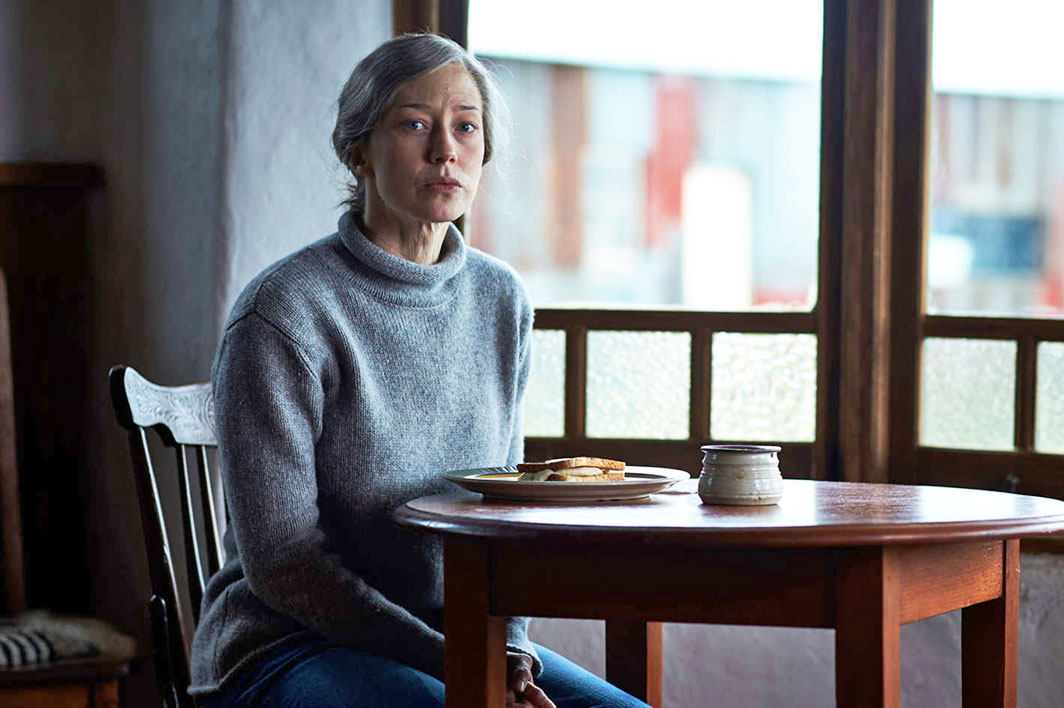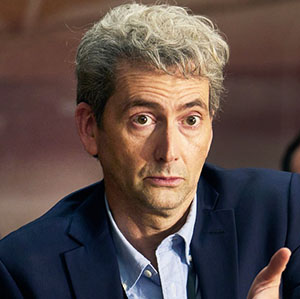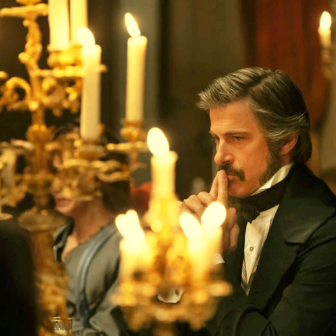Ask three dozen discerning viewers to nominate their favourite series for binge watching during the lockdown, and some curious patterns emerge. When I tried this experiment on social media I collected a list of over fifty titles, and although very few got more than one vote, there was a certain consistency underlying the diversity.
What makes a television drama addictive? This is a very different question from that of what makes good viewing, episode by episode. It’s less about the objective qualities of acting, script and production and more about what draws you into an imagined world and holds you there. This might account for the prevalence of fantasy in the list of recommendations, despite the fact that most of my respondents were of a sceptical turn of mind.
While many of the strongest dramatic series explore how fantasy and realism leak into each other, it is usually clear how the two are weighted. Genre elements with origins in manga, supernatural mythologies and tales of parallel worlds figure prominently on the fantasy side of the equation. Doctor Who and The X-Files (neither of which appears on my list) led the way in establishing mass audiences and an enduring, largely juvenile fan base.
Twin Peaks (1990–91), which did get mentions, took supernaturalism to another level with its portrayal of a small-town community invaded by powerful dark energies. A plot centred on the mysterious disappearance of seventeen-year-old Laura Palmer (Sheryl Lee), the town’s homecoming queen, allowed auteur director David Lynch to create a wry blend of conventional thriller elements and metaphysical themes. The metaphysics became more overt as the story progressed, but if it sometimes burdened the episodes with too much portentous meaning, the allure of a youthful cast and the stunning mountain scenery of Washington State kept you charmed.
The long-awaited sequel, Twin Peaks: The Return, a form of epilogue aired in 2017 with a cast that had aged twenty-five years, took off into an esoteric phantasmagoria that was strictly for Lynch addicts, leaving the original Twin Peaks fans largely baffled and resentful. Sophistication can be a drawcard — one frequently rejected, or at least underestimated, by producers — but it needs to be combined with some more directly appealing elements.
Matt and Ross Duffer’s Stranger Things (2016–) gets the formula just about right, balancing ingenuous fantasy with complex social and psychological perspectives. Season one, with a group of perfectly cast child actors to inject humour and vitality, was equal parts ET and X-Files. In accord with convention, when a portal opens between worlds, children become the go-betweens, outpacing the adult detectives as they hare off into the night on their bikes, hot on the trail of missing school friends, paranormal monsters, nefarious scientists or groups of dangerous feral teenagers just a few years older than themselves.
No good fantasy series lacks a virus on the loose, and conspiracy theories are of the essence. “A virus is alive. It has intelligence,” pronounces a white-coated expert, and furthermore, “it’s connecting all the hosts.” Teamwork — as demonstrated by our redoubtable gang of twelve-year-olds — will be required to defeat it, as they too are brilliant at making connections.
Portal myths are traditionally associated with a coming-of-age theme, and in Stranger Things this is handled with genuine insight. The children at the centre of the story are a lot more interesting as individuals than the Harry Potter crew. We are spared hackneyed scenes of first romance or identity crisis. This is an adult perspective on the trials of youth, though appropriate for family viewing with children over twelve.
The Leftovers (2014–17), one of the most confronting portal dramas in the television repertoire, is strictly for adults. As one of my respondents said, it is a flawed masterpiece: highly original in conception, and with multiple storylines running in unexpected directions. At times this makes for rather messy episodes — too much happens and every event is laden with backstory — but if you stick with it, the series rewards with a potent evolution of its dramatic world over three seasons.
Season one is set in a town in New York state in the aftermath of “The Departure,” a global event in which 140 million people suddenly and unaccountably vanished. Some have interpreted this as the biblical Rapture, that moment when those who are to be saved are swept up from the earth. A cult calling itself “the guilty remnant” have formed around this conviction. The presence of local branch members, standing white-clothed and silent on street corners, casts a pall over the town.
The storylines involve a group of local people who refuse to embrace the misery. A police officer (Justin Theroux), whose wife has joined the cult, a woman who has lost her whole family (Carrie Coon), and her brother (Christopher Eccleston), a priest who battles against the Rapture doctrine, are each in their different ways striving for sanity in a world in which the very foundations of meaning have been shattered. This is a wounded society haunted by the ubiquitous figure of the cult leader (Ann Dowd), who personifies its trauma.
A new upbeat theme song for season two — Iris DeMent’s “Let the Mystery Be” — signals that the series has hit its stride and found its tone. The group of determined survivors heads for a town in Texas where there were no disappearances. Here another kind of cult prevails, a new-age movement that promotes miracle healing and has turned the local park into a permanent psychic fair evocative of the hippy renaissance at Haight-Ashbury. But the need for faith grips like a vice, with violent consequences.
Season three, where the scene moves to the open landscapes of central Australia, progresses more slowly. There’s an aura of David Lynch about it as encounters between isolated figures in the vast outback terrain alternate between absurdism and surreal nightmare. David Gulpilil, who makes a cameo appearance, allegedly unnerved the producers by saying he doesn’t read scripts. But Gulpilil is a script. Although he says almost nothing, the face speaks volumes and conveys a form of knowing that the relentless seekers in this drama crave.
If portal dramas can play across a spectrum from stern rationalism to the domains of the psychic, The Leftovers is situated about midway. Let the mystery be. If you are a confirmed sceptic, that series might help to soften you up for The OA (2016 and 2019), the brainchild of writers Zal Batmanglij and Brit Marling, who also plays the lead role. Here we have an inverse situation: missing people return from another dimension. The first of the reappearances is a young woman who has been gone seven years. Once blind, she can now see. Declaring herself the Original Angel (OA), she claims she can bring back other missing people if only she can convince those in our world to follow her lead.
It’s a bold and genre-defying venture, unashamedly dispensing with accepted dramatic logic but staunchly keeping faith with its own terms of insight. Netflix produced only two of its planned five seasons, but its cult following has spawned a “renewal movement” on the internet.
Exchanging the OA for the austere environment of the OI (Office of Interchange), a strange UN bureaucracy based in Berlin, Counterpart (2017–19) offers a treatment of the portal theme that is more Kafka than Jung. The OI monitors a secret interface between dimensions. In its grey corridors and offices, the work seems as banal as anywhere else to Howard Silk (J.K. Simmons), a self-effacing middle-aged employee. But Silk suddenly acquires importance when his double — a confident and assertive negotiator — appears on the other side and demands an exchange of places. Dramatically cogent and superbly acted, it repays the concentration needed to follow the complex power play that unfolds.
“The past is a foreign country” L.P. Hartley famously wrote in his 1953 novel The Go-Between, and if you are in the mood for going between worlds, many historical series offer this kind of imaginative tourism. Nominations on my list included Versailles, Wolf Hall, Babylon Berlin and Mad Men.
Hartley’s dictum should be heeded. Producers and dramaturges who take on a period piece in order to show how very contemporary its world really was can be just as annoying as tourists who tramp around foreign countries wanting things to be just like home. The real challenge is to take on the strangeness of another era: in its language and codes of behaviour, its power structures and habits of life.
As befits its subject, Versailles (2015–) is a dazzling visual extravaganza. No expense has been spared in evoking the legendary theatrical tableaux of the Sun King’s reign, and every aspect of costume and setting is expertly researched. For all its research, though, it’s a quasi-historical epic, bent on showing us how like today’s young adults these cavorting aristocrats really were. They were into sex and power, and sex as power, and all that. Their sense of image set a standard no Vogue cover shoot could emulate. And, of course, the cast are young and beautiful and seductive.
A trawl through the portrait gallery on Google provides abundant evidence that Louis XIV was never pretty. He had enough Habsburg blood to ensure he was endowed with the ironic curse of that dynasty: when it came to the attributes of human beauty, inbreeding had earned them a genetic bypass. His sense of theatricality and image was indeed extraordinary but had little to do with the kinds of aspiration that drive today’s fashionistas. He was a hardhead who reinvented the divine power of the monarch for an age in which pre-eminence was assured through a blend of mesmerism and intimidation. The iconography of the Roi Soleil was drawn from esoteric symbolism, occult architecture and an alchemy created from the new technology of mirrors. Apparently, though, talk about sex is so much more interesting to twenty-first-century audiences.
Wolf Hall, reviewed here in 2015, doesn’t succumb to the temptations of pseudo-contemporaneity. Hilary Mantel, author of the novels on which the series is based, declares that history is “the absolute foundation” of everything she does, and by that she doesn’t just mean getting the costume details right. Mantel understands the psycho-dynamics of Tudor power play like no one else, and from this weaves a suspenseful narrative in which each of the lead characters knows their destiny is at stake at every turn. A stellar cast is led by Mark Rylance as Thomas Cromwell.
When it comes to historical dramas of the modern era, there are nuanced generic elements to draw on. The production team for Babylon Berlin (2017–), set in the Weimar era, decided to go for the sepia tones and misty cinematography of neo-noir rather than the jarring expressionist aesthetic characteristic of the period. This gives it a certain softness around the edges: no one is ever quite sure what they are seeing, or hearing.
Scenes of squalid domestic life are offset by the glamour of the cabaret scene, evoked through a recreation of the Moka Efti, the largest and most extravagant venue in Berlin. There are topless flappers, banana-dance troupes, and drag queens. Singers — including Bryan Ferry, who advised on the music repertoire for the series — exude dark sexuality and drool insinuating, apocalyptic lyrics into the microphones.
This is a world on the edge, but on the edge of what? At the time, nobody knew, though disturbing international movements were afoot. A strong central plotline, involving liaison between a Trotskyist organisation and the German Communist Party, keeps the dramatic momentum going through the first two seasons. With season three, world events heat up as the Berlin stock exchange crashes, assassinations and bombings disrupt the life of the city, and the Hitler Youth are on the rise.
It’s compelling stuff, but dark. If you need something more exuberant to get you through the lockdown, history and fantasy meet in the unique world of Mad Men (2007–15), whose all-round brilliance and freshness is undimmed by the passage of time. •




